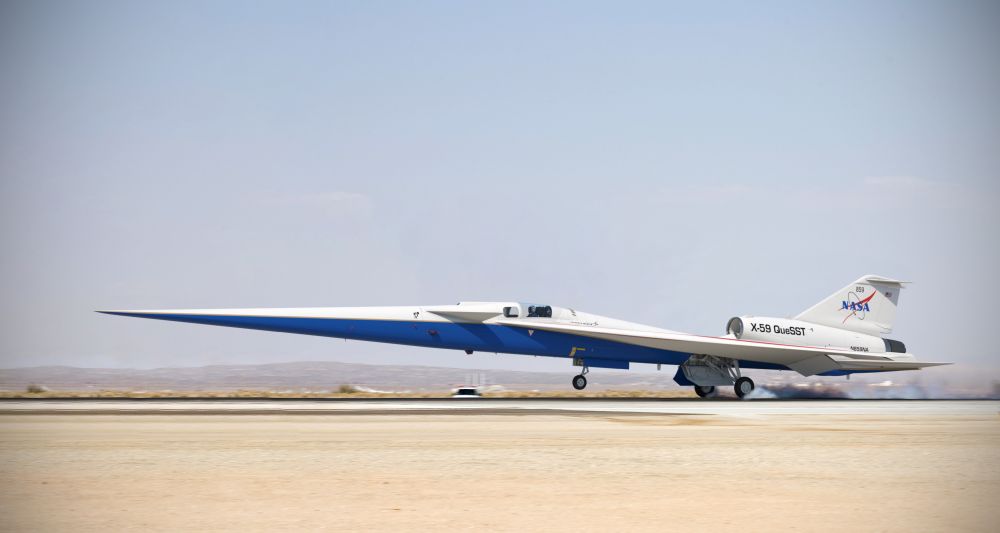NASA’s X-Plane Program has been around for 70 years. Over the course of those decades, the agency has developed a series of airplanes and rockets to test out various technologies and design advances. Now NASA has cleared the newest one, the X-59, for final assembly.
Continue reading “NASA Will Be Building a Quiet, Supersonic Aircraft: the X-59”NASA Begins Construction of its New Quiet Supersonic Plane
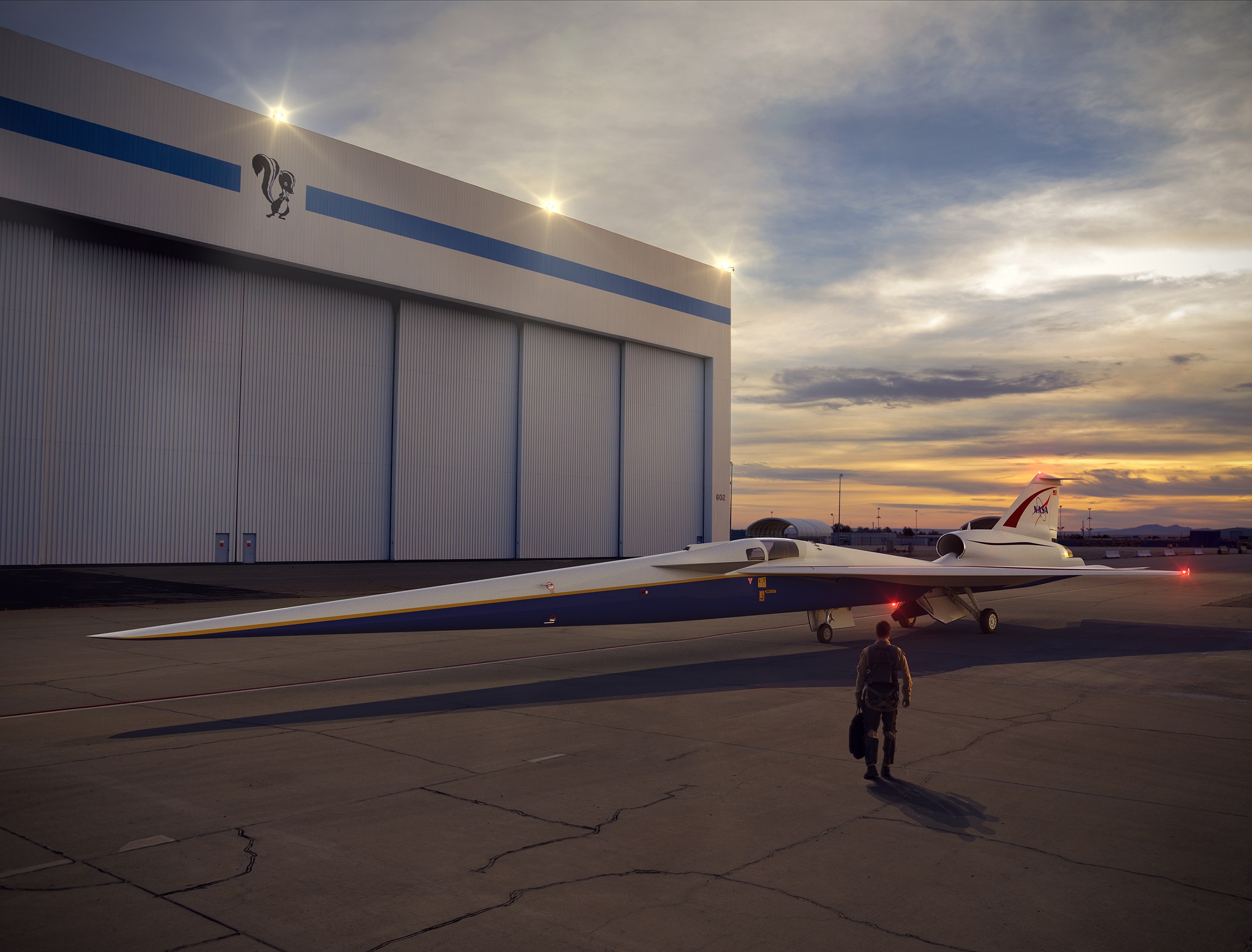
NASA has a lot of experience when it comes to developing supersonic aircraft. In fact, testing supersonic craft was how NASA got its start, back when it still known as the National Advisory Committee for Aeronautics (NACA). Beginning with the Bell X-1, the tradition of using X-planes and other experimental aircraft continues, and has progressed to hypersonic scramjets and spaceplanes (like the X-37).
And now, for the first time in decades, NASA is looking to develop a new supersonic aircraft. But whereas previous aircraft were developed for the sake of breaking speed records, the purpose of this latest X-plane is to create a Quiet Supersonic Transport (QueSST). NASA hopes that this craft will provide crucial data that could enable the development of commercial supersonic air travel over land.
To that end, NASA awarded a $247.5 million contract to Lockheed Martin Aeronautics Company on April 2nd to build the X-plane and deliver it to the agency’s Armstrong Flight Research Center in California by the end of 2021. As Jaiwon Shin, NASA’s associate administrator for aeronautics, indicated in a recent NASA press release, this project is like revisiting the old days of NASA research.

“It is super exciting to be back designing and flying X-planes at this scale,” he said. “Our long tradition of solving the technical barriers of supersonic flight to benefit everyone continues.”
In the past, supersonic commercial flights were available, for people who could afford them at least. These included the British-French Concorde (which operated until 2003) and the Russian Tupolev Tu-144 (retired in 1983). However, these craft were incapable of conducting supersonic flights over land because of how breaking the sound barrier would generate a sonic boom – which are extremely loud and potentially harmful.
As a result, current Federal Aviation Administration (FAA) regulations ban supersonic flight over land. The purpose of this latest aircraft – known as the Low-Boom Flight Demonstrator – is to conduct supersonic flights that create sonic booms that are so quiet, they will be virtually unnoticeable to people on the ground. The key is how the X-plane’s uniquely-shaped hull generates supersonic shockwaves.
With conventional aircraft designs, shockwaves coalesce as they expand away from the airplane’s nose and tail, resulting in two distinct sonic booms. In contrast, the X-plane’s hull design sends shockwaves away from the aircraft in a way that prevents them from coming together. Instead, much weaker shockwaves are sent to the ground that would be heard as a series of soft thumps.
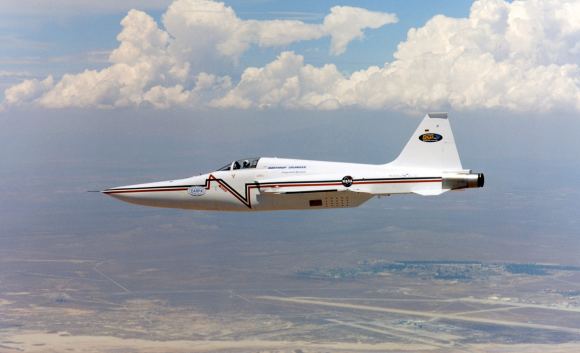
Since the 1960s, NASA has been testing the idea using vehicles like the F-5E Tiger II fighter jet. This aircraft, which flew test flights in 2003-2004 as part of NASA’s Shaped Sonic Boom Demonstration program, had a uniquely-shaped nose and demonstrated that boom-reducing theory was sound. More recent flight testing, wind-tunnel testings, and advanced computer simulations tools have also indicated that the technology will work.
As Peter Coen, NASA’s Commercial Supersonic Technology project manager, stated:
“We’ve reached this important milestone only because of the work NASA has led with its many partners from other government agencies, the aerospace industry and forward-thinking academic institutions everywhere.”
The X-plane’s configuration will be based on a QueSST design that Lockheed Martin developed in 2016 in partnership with NASA, and which completed testing in a wind tunnel at NASA’s Glenn Research Center in 2017 . The proposed aircraft will measure 28.65 meters (94 feet) long, have a wingspan of about 9 meters (29.5 feet), and have a takeoff weight of 14,650 kg (32,300 lbs).
Based on the company’s design, the X-plane will be powered by a single General Electric F414 engine, the same used by F/A-18E/F fighters. It will be flown by a single pilot and have a top speed of Mach 1.5 (1590 km; 990 mph) and a speed of Mach 1.42 (1513 km; 940 mph) at a cruising altitude of 16764 meters (55,000 feet).
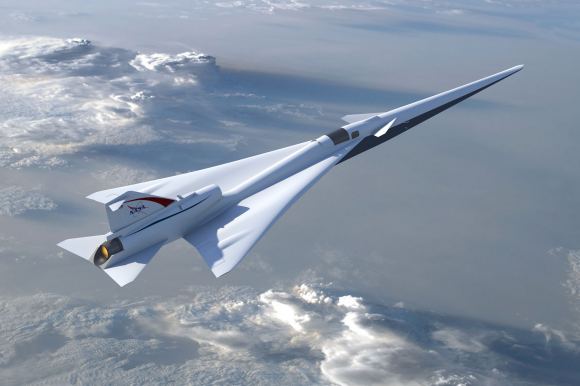
As Shin indicated, the development of the X-plan is a joint effort involving all of NASA’s aeronautics research centers:
“There are so many people at NASA who have put in their very best efforts to get us to this point. Thanks to their work so far and the work to come, we will be able to use this X-plane to generate the scientifically collected community response data critical to changing the current rules to transforming aviation!”
The program is divided into three phases which are tentatively scheduled to run from 2019 to 2025. Phase One, which will run from 2019 to 2021, will consist of a critical design review in preparation for construction. If successful, construction will begin at Lockheed Martin’s Skunk Work‘s facility in Palmdale, followed by a series of test flights and culminating with the delivery of the craft to NASA.
Phase Two, scheduled to begin in 2022, will consist of NASA flying the X-plane in the supersonic test range over Edwards Air Force Base in southern California to see if it is safe for operations in the National Airspace System. Phase Three, running from 2023 to 2025, will consist of the first community response test flights (staged from Armstrong Air Force Base) followed by further test flights over four to six U.S. cities.
The data gathered from these community response tests will then be delivered to the FAA and the International Civil Aviation Organization (ICAO) – currently targeted for delivery in 2025 – so they can adopt new rules based on perceived sound levels. If the Low-Boom Flight Demonstrator should prove to be effective, commercial supersonic flights over land may finally become feasible.
And be sure to enjoy this video of the X-plane’s development, courtesy of NASA:
Further Reading: NASA
NASA Brings Back the X-Plane, and This One’s Electric
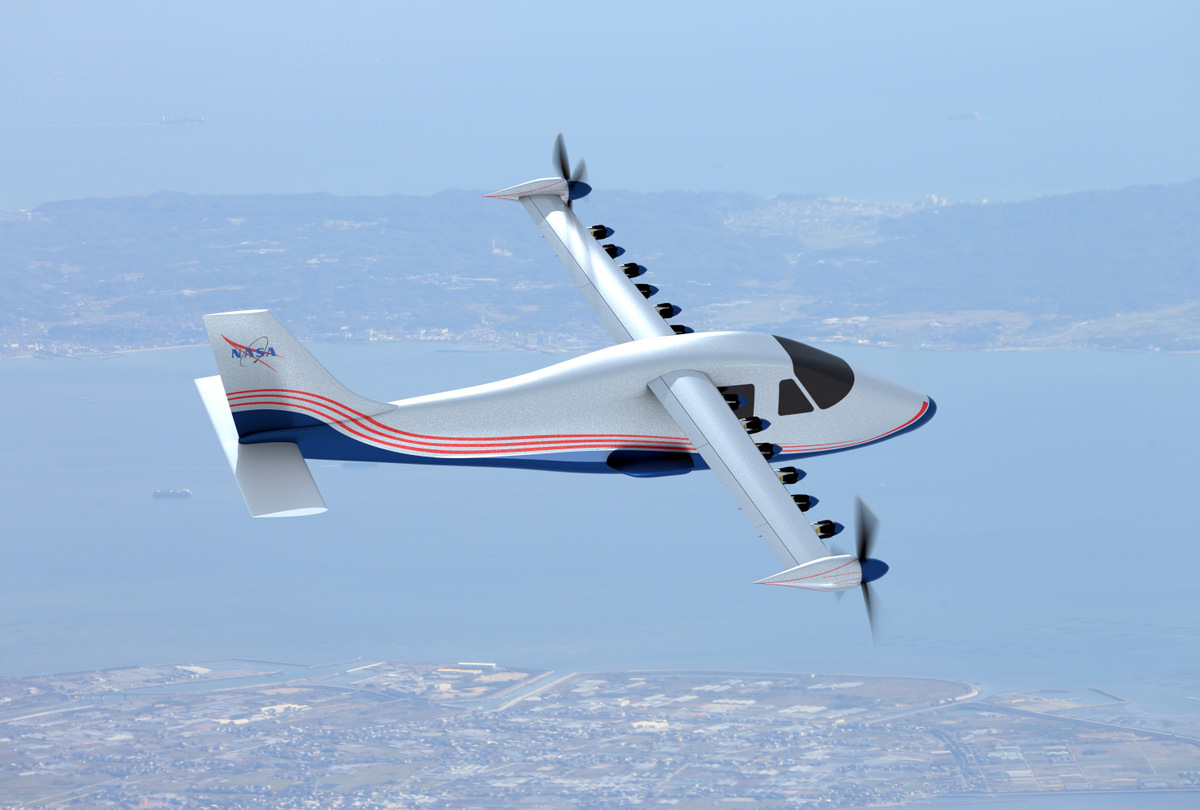
While NASA has had a long and storied history of building and testing experimental aircraft – called X-planes — it has been almost a decade since the space agency has developed any new aircraft. But an initiative announced earlier this year as part of the new budget has NASA back designing, building and flying a new series of X-planes, with the goal of creating more “green” aviation technologies that can then be utilized by the aeronautics industry.
NASA unveiled the first plane in the new X series, an electric aircraft with 14 motors integrated into a new wing design. This experimental airplane has been designated the X-57, with the nickname of “Maxwell,” to honor James Clerk Maxwell, the 19th century Scottish physicist who did groundbreaking work in electromagnetism.
“With the return of piloted X-planes to NASA’s research capabilities – which is a key part of our 10-year-long New Aviation Horizons initiative – the general aviation-sized X-57 will take the first step in opening a new era of aviation,” said NASA Administrator Charlie Bolden, speaking at an annual forum of theAmerican Institute of Aeronautics and Astronautics (AIAA).
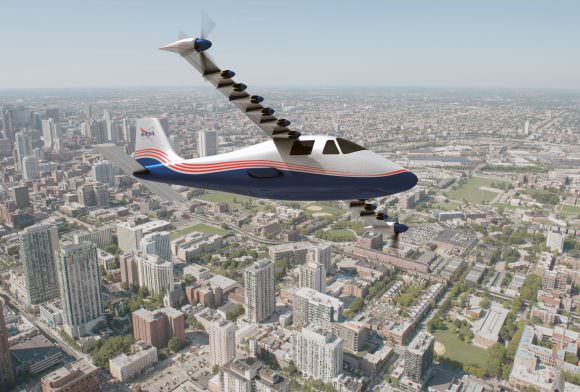
Other new X-plane designs include larger transport-scale aircraft that will use less fuel and create less noise, and a business-jet-sized supersonic vehicle that burns low carbon bio-fuels and generates only quiet sonic booms that people on the ground will barely hear. The main goals of the new X-planes will be to demonstrate how airliners can burn half the fuel, saving airline companies money, while generating 75 percent less pollution during each flight as compared to now. They’ll also be much quieter than today’s jets.
The X-57 Maxwell has newly designed long, skinny wings embedded with 14 electric motors – 12 on the leading edge for take offs and landings, and one larger motor on each wing tip for use while at cruise altitude. The idea is that distributing electric power across a number of motors integrated with an aircraft will result in a five-time reduction in the energy required for a private plane to cruise at 175 mph.
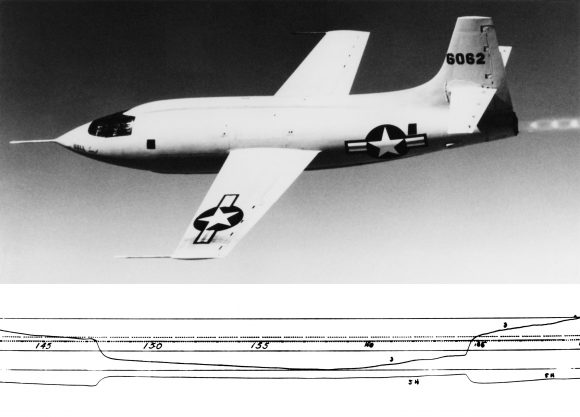
NASA’s first X-plane was the X-1, which in 1947 became the first airplane to fly faster than the speed of sound. It was flown by Chuck Yeager and was featured in the book and movie “The Right Stuff.” While many of the aircraft were well known — like the X-15 that became the fastest piloted aircraft of the X-plane program — other aircraft were developed clandestinely. Other experimental aircraft included research on lifting bodies and other wing designs or unique engines like the scramjet. Other experimental aircraft didn’t carry the “X” designation, like the Navy’s D-558-II Skyrocket, but was flown by Scott Crossfield in 1953 to become the first airplane to travel twice the speed of sound, or Mach 2.
“Dozens of X-planes of all shapes, sizes and purposes have followed – all of them contributing to our stature as the world’s leader in aviation and space technology,” said Jaiwon Shin, associate administrator for NASA’s Aeronautics Research Mission Directorate. “Planes like the X-57, and the others to come, will help us maintain that role.”
Further reading: NASA

